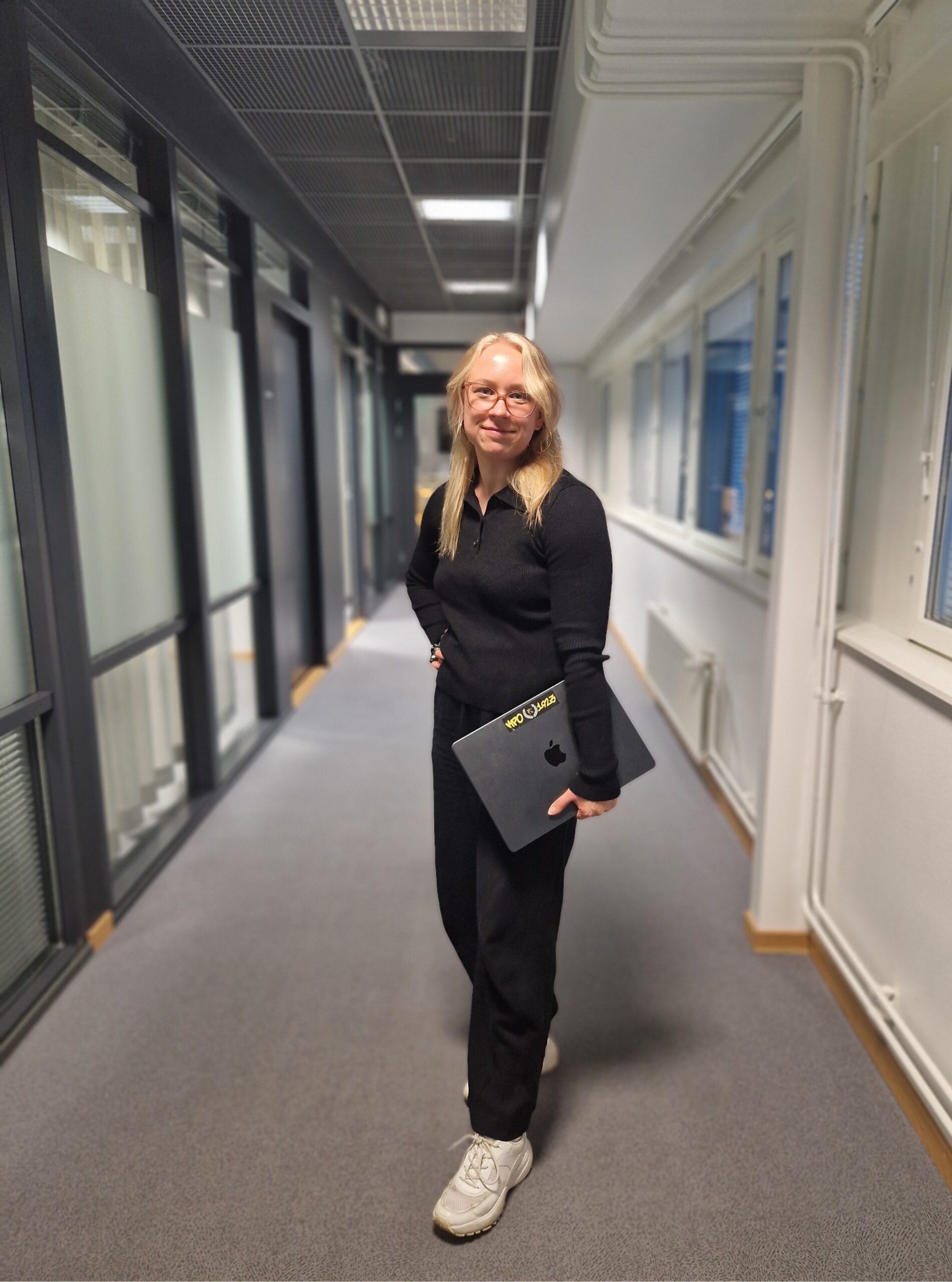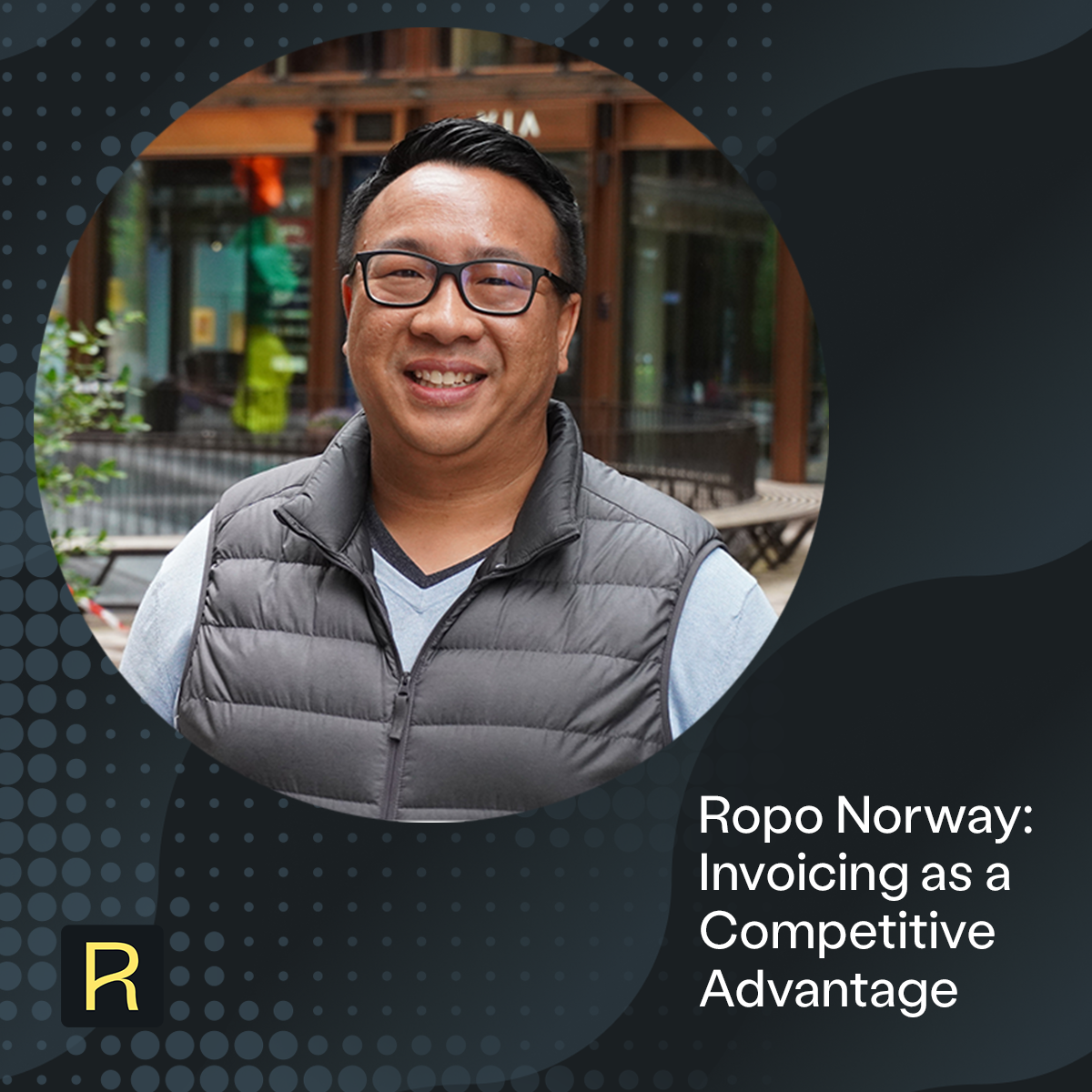In the fast-evolving Nordic energy landscape, companies are rethinking their invoicing strategies to stay ahead of future demands. With high invoice volumes, sector-specific regulations, customization needs, and evolving customer expectations, energy providers are turning to smart invoicing technology and automation to streamline operations, boost cash flow, and simplify payments.
This article explores how leading Nordic energy companies are transforming their invoicing processes with Ropo – and the tangible benefits they’re seeing as a result with five concrete tips.
1. Unify workflows for efficiency and control
Traditionally, invoice management has relied on multiple partners and in-house systems – often two to four different platforms with complex integrations. This fragmentation disrupts workflows, reduces forecasting accuracy, and limits visibility.
Invoicing transformation with Ropo begins by streamlining the entire invoice-to-cash workflow into Ropo One™ – a technology platform designed to support every step from invoice delivery to sales ledger management, payment monitoring, automated late payment workflows, reminders, soft notifications, and collection activities.

For Lars Gunnar Abusdal, CFO at Skandia Greenpower, the benefits of a one-platform invoicing approach have proven transformative:
“Bringing all invoicing information and routines together in one place has improved and streamlined our processes, in addition to delivering significant cost savings.”
Read how Skandia Greenpower streamlines invoicing with Ropo One™
The financial and qualitative benefits are clear. CFOs in the energy sector pay close attention to process and resource efficiency, oversight, and operational control.
Ole Angellsen, Director at Bodø Energi Kraftsalg, shares how consolidating invoicing processes has improved operations:
“We greatly appreciate having invoice delivery, receivables management, and collections all in one system. It has eliminated friction points and optimized our processes. We now spend far less time on administrative follow-up, and our operations flow seamlessly.”
Discover how Bodø Energi achieved full invoice lifecycle control through unified Ropo One™ platform
2. Rely on industry expertise
What sets successful invoicing transformations apart in the energy sector is the combination of technological capability with deep industry knowledge. When major energy companies evaluate their options, industry expertise becomes decisive.
Ropo currently manages around 50 million energy-related invoices annually across Finland, Sweden, and Norway. This extensive experience provides a solid foundation for collaboration and sharing best practices across the industry.

Sanna Turunen, Customer Manager at Caruna, a Finnish electricity network company, emphasizes trust and expertise:
“Ropo’s strong experience in the energy sector created confidence from the very beginning. Additionally, the single-provider model for invoicing and receivables management was a completely new way of operating for us, and it quickly proved to be a highly effective solution.”
Beyond technology, energy companies value partners who understand their long-term growth objectives and can adapt solutions accordingly.
“We see Ropo more as a partner than a supplier. There’s a sense of teamwork that ensures we’re moving in the same direction – and that is crucial for a successful project,” notes Jerry Ådén, Invoicing Manager at Storuman Energi.
Read more: Storuman Energi partners with Ropo for streamlined invoicing
This consolidated approach replaces fragmented platforms with a comprehensive partnership that delivers fewer moving parts, better cash flow control, and end-to-end support for customers.
3. Automate with precision
Nordic energy companies typically manage massive invoice volumes every month across diverse customer segments. At the same time, they must meet strict industry-specific requirements: disconnection procedures for unpaid invoices, fire safety checks integrated into the reconnection process, and customized late payment flows that accommodate seasonal variations.
Regulatory compliance adds further complexity – wintertime constraints on power cutoffs, mandatory advance warnings before any disconnection procedures, and other sector-specific protocols must be built into every workflow.
In a digitalized one-platform workflow within Ropo One™, automation covers the entire lifecycle – from multichannel invoice delivery to payment monitoring, payment processing, and late payment flows including SMS notifications, reminders, cutoff warnings, and collection activities. This reduces manual work, accelerates cash flow, and ensures compliance.
Ole Angellsen from Bodø Energi underlines smart resource allocation and automation designed to meet industry-specific needs:
“We simply don’t have the resources to handle manual processes and errors. Everything is now automated and streamlined – invoices reach their intended destinations, payments are allocated correctly, and we’ve achieved significant time savings internally.”
Advanced automation – with configurable thresholds, tailored late payment flows for every industry-specific case, and automated payment processing – delivers efficiencies while safeguarding both regulatory compliance and customer experience.
4. Don’t forget customer touchpoints
While efficiency, automation, and improved control are key drivers, customer experience remains central to invoicing transformation. One of the primary goals is to improve customer encounters and service quality. A successful transformation empowers invoice receivers, the end customers, with more control over their invoices.

“Energy leaders want to ensure that, no matter what happens, their customers receive consistently high-quality service,” explains Christian Krekula, Head of Pan-Nordic sales at Ropo. “That means investing in robust self-service channels, multilingual support, comprehensive service hours, and seamless integration between their customer platforms and ours. These are typically the key priorities we see across the sector.”
A well-designed transformation considers every touchpoint – from invoice branding to website content, contact details, and the payment journey.
Companies should ask:
- How do customers prefer to pay?
- Is the payment process effortless?
- Are features like payment links and QR codes used effectively?
- Can customers easily find invoices or request payment arrangements?

When all stakeholders are considered, collaboration thrives from the start.
Maria Hattunen, Head of Administration at Hehku Energia, highlights the importance of service and system development:
“With Ropo, we can trust that invoicing and receivables management processes are handled with high quality, and the related tools and services are always at the forefront of development. The cooperation has been smooth from the start.”
See how Hehku Energia built a reliable invoicing partnership supporting business growth
5. Demand transparency in process and pricing
For large companies, changing something as essential as invoicing is a major step. But reviewing all invoice-related workflows with a professional partner can be eye-opening – often revealing new opportunities for optimization.
Modern tools are built for digitalized processes, enabling greater automation and transparency with improved quality and control. With advanced automation and real-time data and analytics, companies can shift focus from routine tasks to higher-value activities such as monitoring, forecasting, and continuous improvement.
In a fully digitalized process, real-time reporting, audit trails, and actionable insights become readily available, supporting both operational excellence and regulatory compliance.
Caruna’s Sanna Turunen emphasizes the importance of robust solutions not only for forecasting and financial risk management, but also for quality control:
“Ropo OneView™ is a highly functional tool for us. It helps us easily detect changes in payment behavior and anticipate payment delays or financial risks,” says Turunen. “Through the service, it’s effortless to ensure that Ropo’s customer service operates smoothly and meets our customers’ daily needs.”
The results speak for themselves
Energy companies implementing Ropo’s comprehensive invoicing solutions report significant improvements in operational efficiency and cash flow predictability. More importantly, they gain the visibility needed for proactive financial management.
Skandia Greenpower’s Lars Gunnar Abusdal agrees with Turunen – oversight of the entire financial process has improved through their invoicing transformation with Ropo:
“Ropo’s analytics tools provide the finance function with much better insight into financial processes and customer follow up.”
With all invoice-related workflows unified, reporting and forecasting reach a new level, improving both visibility and control. Finance teams benefit from greater transparency across the entire invoicing and payment process, making it easier to identify opportunities for optimization. This can include adjusting invoice frequency, strengthening credit policies, and guiding customers toward digital channels that reduce payment delays.
Learn how Caruna transformed its invoicing process for greater efficiency and control
Conclusion: One platform, full control
The Nordic energy sector’s evolution toward optimized cash flow management reflects broader recognition: financial operations are too critical to remain fragmented. Leaders who have unified their invoicing processes report not just cost savings, but the operational foundation needed for sustainable growth.
Ropo is the Nordic market leader in invoicing technology, transforming the entire invoice-to-cash journey. By unifying and streamlining every step, we help companies achieve full visibility, enhanced customer experience, and stronger financial control – all through one platform.
With over 11,000 clients across Finland, Sweden, Norway, and Denmark, we’re proud to set the standard for invoicing transformation in the energy sector and beyond.

Lars Gunnar Abusdal
CFO, Skandia Greenpower

Ole Angellsen
Director, Bodø Energi Kraftsalg

Sanna Turunen
Customer Manager, Caruna

Jerry Ådén
Invoicing Manager, Storuman Energi

Maria Hattunen
Head of Administration, Hehku Energia

Christian Krekula
Head of Pan-Nordic sales, Ropo
Explore our service
Unify your invoicing process to improve control, visibility, and customer experience. Ropo helps you streamline your invoice and payment flows end-to-end for efficiency and optimized cash flow.
Read more

Life at Ropo
Meet Moona: From Fashion Blogging to Coding – Curiosity Opened the Door
Read more
Insights & Trends
3 Days Faster Cash Conversion with Process Improvements
Read more
Insights & Trends
Inside Ropo Norway: Turning Invoicing Into a Competitive Advantage
Read more
Services & features

 Login: Finland
Login: Finland